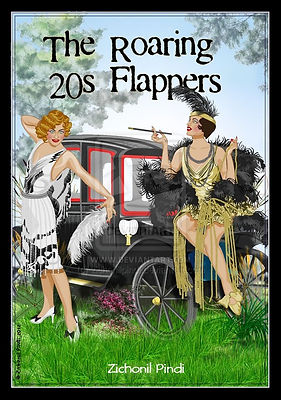The Jazz Age & The Roaring 1920s
SS5H2 Describe U.S. involvement in World War I and post-World War I America. b. Describe the cultural developments and individual contributions in the 1920s of the Jazz Age (Louis Armstrong), the Harlem Renaissance (Langston Hughes), baseball (Babe Ruth), the automobile (Henry Ford), and transatlantic flight (Charles Lindbergh).
1920-1929
The Roaring Twenties was a time of hope, prosperity, and cultural change. The economy and stock market boomed. People had extra money to spend on entertainment and consumer goods. Advances in industry allowed the average person to buy goods such as automobiles for the first time. Women were newly empowered by gaining the right to vote in 1919. Everything seemed like it was going great, and people thought that the good times would never end.
End of World War I
The optimism of the early 1920s was largely due to the end of the World War I in 1918. The United States had been on the winning side of the war and had emerged from the war as a major world power. Confidence in the U.S. government and the ability of the armed forces to protect freedom was at an all-time high.
Booming Industry
American Industry grew rapidly during the 1920s. Mass production of consumer products like automobiles- HENRY FORD, phonographs, and radios lowered prices and made these products available to the average middle-class family. For the first time, working-class families could buy a car on credit. Everyone wanted to own a car and a radio. The economy was booming and it looked like there was no end.
Jazz Music
Sometimes the Roaring Twenties is also called the "Age of Jazz." Jazz music became very popular across the United States. People listened to it on the radio and heard live jazz bands at dance halls. One of the most popular forms of entertainment was to go out dancing to jazz music. New dances included the Charleston, the Shimmy, and the Black Bottom.
Women's Rights
The 1920s was also a time of newfound independence for women. The Nineteenth Amendment was ratified in 1920 giving women the right to vote in the United States. Also, many women had taken on new jobs during World War I and weren't ready to give up their independence. Women began to dress differently. Young women wore shorter skirts and short hair. Women began to take part in the consumer economy and gain more freedom in the modern culture.
Cultural Change
The Roaring Twenties signaled a major shift in the culture of the United States. With the invention of the radio, movies, and mass produced consumer goods, the 1920s became a time of mass culture. People throughout the United States listened to the same radio shows, watched the same movies, and bought the same products. People from one side of the country to the other were doing many of the same things.
Stock Market Crash of 1929
With all the optimism and the booming economy, people were buying lots of products on credit. The overall debt of the country grew rapidly. At the same time, people were speculating on the stock market. Stock values soared and people thought they would go up forever. However, on October 29,1929, the stock market crashed. This day is known as Black Tuesday and it signaled the beginning of the Great Depression.
Interesting Facts
-
In France the Roaring Twenties are called the "annees folles", which means "crazy years."
-
Young women who wore short skirts, short hair, and listened to jazz music were nicknamed "flappers."
-
Charles Lindbergh flew the first solo nonstop transatlantic flight in 1927.
-
The 1920s were a time of prohibition when alcoholic drinks were illegal in the United States.
-
The price of a Model T Ford car in 1925 was around $260
